Throughout the ’40s and ’50s, Ed Gein was known as the odd but likeable handyman-about-town in Plainfield, Wisconsin. He and his brother, Henry, did odd jobs for locals. Gein was known for being great with kids and made some extra cash as a babysitter. Little did the residents of Plainfield know that Gein had more than just skeletons in his closet—he literally had a graveyard in his house.
Described as mild-mannered and a bit odd, Gein would go down in criminal history as one of the most notorious serial killers. Mentioned in the same sentence with infamous names such as Jeffrey Dahmer, Ted Bundy, and John Wayne Gacy, Gein is also the inspiration behind many famous characters in horror fiction and film. The stories of Norman Bates, Leatherface, and Silence of the Lambs‘ Buffalo Bill all contain elements of Gein’s crimes.
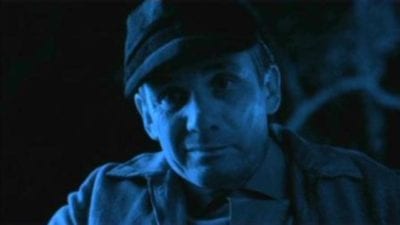
Gein’s true tale of terror begins in rural Plainfield, Wisconsin in 1957. Police were investigating a missing person. Bernice Worden owned a local hardware store. Some locals had seen Worden’s truck pull out of the back of the store at 9:30 AM on the morning she disappeared. The Wordens closed the store for that day. Locals assumed because it was the start of deer hunting season. Worden’s son, Deputy Sheriff Frank Worden, had joined the hunt. He stopped by the store at 5 PM and found the cash register open and blood on the floor.
Worden’s son told investigators that Gein had been the last customer the night before. He said that Gein was going to return the following morning to buy antifreeze. Police found Worden’s last receipt which was for antifreeze.
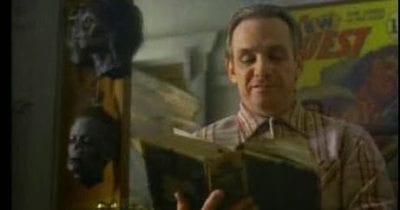
Police called Gein’s farm but couldn’t reach him. They went to a neighbor’s house that he was known to frequent. The family confirmed that Gein had been there helping to install a car battery and stayed for supper. When police arrived, Gein was in his car with one of their sons and about to leave. After asking a few questions, police were suspicious of Gein’s demeanor and responses.
When investigators walked into Gein’s house, Bernice Worden’s body was found hanging upside down from the ceiling. She was “dressed out like a deer,” mutilated and decapitated. Her head and heart were both found each in a separate bag. She was shot and killed with a .22 caliber rifle before being mutilated. The horrific sight of Worden’s remains was just the beginning. The remains of many other women were later found.
Mary Hogan, a local bar owner disappeared on December 8, 1954. Hogan’s face was found in a paper bag at Gein’s house. Gein was known to frequent her tavern which was seven miles from his house. He reportedly fixated on Hogan who resembled his mother. All that was found at the tavern was a pool of blood and a spent .32 caliber cartridge. There was no sign of Hogan. Locals recalled that Gein made a joke about Hogan, saying that she wasn’t missing but down at his farm.
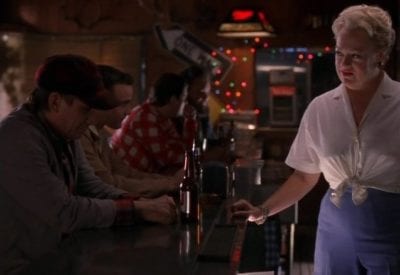
Gein was mild-mannered as he casually confessed to the murders of Bernice Worden and Mary Hogan. He said that he burned Hogan’s remains in his pot-bellied stove. In his house, they also found chairs upholstered with human skin, skulls used as bowls, and a human face being used as a lampshade. He told investigators that, beginning in 1947, he made 40 visits to three local cemeteries. Gein admitted that he specifically took remains from the graves of middle-aged women who were close to his mother’s age. Some of these women he knew in life. He described having black-outs and being in a “daze-like” state during his visits to the cemetery. Gein said that he would sometimes take just the head and genitals and rebury the body. He denied engaging in necrophilia because the bodies smelled too badly.
If you thought this tale couldn’t get more gruesome, Gein admitted that he was trying to make a “woman suit” made of the remains of real women. Gein’s mother had passed away and he said that the suit made him feel close to her. The makings of this suit recovered from Gein’s house. It included a corset, leggings, and nine masks made from real human skin from female bodies. The masks all were from women, all had their hair still attached and even had lipstick applied. There was also a box full of female genitalia and a belt made of nipples.
Gein underwent extensive psychological testing at Central State Hospital for the Criminally Insane and diagnosed with schizophrenia. He was charged with the murders of Bernice Worden and Mary Hogan. Gein was found guilty by reason of insanity and confined to a psychiatric institution until his death in 1984.
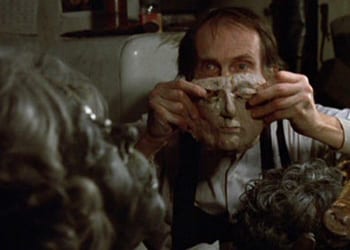
So, what is Gein’s story and why did he have such a bizarre attachment to his mother?
Edward Theodore Gein was born on August 27, 1906, in LaCrosse, Wisconsin. He had an older brother, Henry. His father, George, was a carpenter, tanner, and insurance salesman. His mother, Augusta, ran a grocery store. The Geins sold the store and bought a 155-acre farm in Waushara County, Wisconsin. The farm was in an isolated area in Plainsboro, Wisconsin. George was an alcoholic who died in 1940. Augusta was known as strict, domineering, and fanatically religious. The Geins did not have a happy marriage due to George’s excessive drinking and occasional unemployment. Augusta wouldn’t divorce her husband because of her strict Lutheran beliefs.
Ed Gein and his older brother grew up in isolation on the farm. The Gein brothers only left the farm to attend school. Gein’s childhood was a perfect dysfunctional storm of beatings by his drunken father and his mother’s fanatical fire and brimstone religious teachings. Augusta enjoyed the isolation that served as insulation to keep her sons from the outside world. She saw this as a perfect atmosphere to instill her religious beliefs in her sons.
Augusta regularly read passages from the Bible, particularly violent ones from the Old Testament. She taught her sons that women were evil. Augusta didn’t allow him to socialize with other children and punished her sons if they tried to make any friends. Former classmates said that Gein had odd mannerisms such as spontaneous laughter. When not busy with school work, Ed and his brother did chores on the farm. No matter what they did, Augusta punished them.
During their adulthood, the Gein brothers worked as handymen. Ed also earned money babysitting. Reportedly, Ed Gein had an easier time relating to children than adults. His brother Henry disagreed with his mother’s views on women and developed a relationship with a single mother. Ed’s attachment to their mother concerned his older brother, who was very critical of her around Ed.
Henry Gein died under suspicious circumstances during a fire on the farm in 1944. The two brothers were burning a brush fire that got out of control. Gein said that him and his brother became separated as the fire grew out of control. Once the fire was out, Gein claimed that his brother disappeared. Although Gein claimed he had no idea where his brother was, he led a search party straight to his brother’s body. Henry Gein’s body was not burned but very bruised especially on the head. At the time, police surprisingly dismissed any suspicion of foul play and there was no autopsy performed. Shortly after Henry’s death, Augusta Gein had two strokes and died in 1945.

After his mother’s death, Ed Gein boarded up rooms she used the most including both upstairs and downstairs parlor and living room. The rest of the house fell into disarray. Gein also became an avid reader of pulp magazines, true crime, and books on anatomy. Gein took up his macabre hobbies of raiding graves in local cemeteries for female body parts and graduated to homicide.
Rumors began circulating about Gein having shrunken heads in his house. Some local children had visited the Gein farm. They said that Gein told them that his cousin, who served in the Philippines during the war, sent him the heads. During this time period, there were four other disappearances in the area including an 8-year-old girl and a teenage babysitter. Gein has never been connected to these disappearances.
You don’t have to be a clinical psychologist to say that the Geins’ home would be a breeding ground for extreme abnormality. Gein was the product of an unstable and toxic environment. His parents’ abnormality plus forced isolation created a boy who was socially awkward. There was a difference between the two brothers. Henry Gein is described as rejecting his mother’s teachings. He is also described as making his brother angry with critical remarks about their mother. Unfortunately, Augusta Gein did succeed with instilling her beliefs in Ed.
The comparison between Ed and Henry makes me think about the nature versus nurture debate—two people are raised in the same environment but turn out differently. Is who we are the product of genetics, environment, or both?
Ed was more susceptible to his mother’s influence than his older brother. Both his parents were definitely not well-adjusted people. Both engaged in extreme and abnormal behavior. Gein’s father’s excessive drinking could’ve been an outlet for whatever issues he had just as his mother’s unwavering and extreme adherence to religion was an outlet for hers. Could the parents have passed on some sort of mental illnesses made worse by the abnormal environment that they raised their children in?
Henry Gein was older, and his nature was to question things. Ed’s nature was to listen to his mother. Perhaps, just as children inherit hair and eye color from parents, mental illness may work the same way. One child may look like their parents while their sibling doesn’t. One child may inherit their parents’ psychological issues while the other doesn’t.
Many believe that Gein most likely killed his brother. Henry broke away, but Ed fell in line with Augusta’s views on things. She made sure she was the center of Ed Gein’s existence and that was exactly what she became. In Gein’s eyes, no one could compare to his mother. Even in the end, he confessed, he was trying to crawl into her skin.


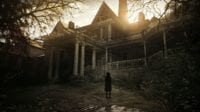

Very good article! May I know the exact date you published this? I need it for my reference page, thank you!
Very well done Article.